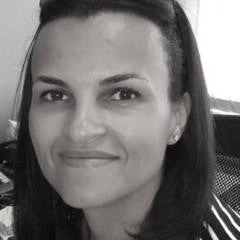 Photo of young women in Yemen
Photo of young women in Yemen
There was a palpable energy buzzing in the room as a group of women and children gathered around to learn more about the power of electricity and solar access in rural Hadramout, in central eastern Yemen. Their curiosity was contagious, as the women, began to ask more and more questions about what electricity was, how it worked, and how it could be of useful to them.
We had organized a field consultation for the Yemen Emergency Electricity Access Project, which is working to expand solar photovoltaic (PV) access by way of subsidized micro-finance packages to communities across the forgotten rural and peri-urban parts of the country, and women were at the center of our agenda.
However, reaching the project’s objectives requires climbing a double-peaked mountain, as access to electricity in rural areas remains extremely limited and only 6.4 % of Yemenis have bank accounts (2% women and 11% men) . Lack of electrification in Yemen is so widespread that public electricity is non-existent in many parts of the country [link to blog] and according to a World Bank-United Nations Office for Project Services qualitative survey conducted across Ibb, Hadramaout and Sana’a governorates, 56% of households spend days without access to any source of power. To cope, people rely on neighbors to recharge batteries or turn to alternatives such as candles, kerosene, and firewood. For those who are able to find (and afford) solar systems that are on the market, products are often of poor quality and ineffective.
Women are particularly vulnerable and have fewer options to access or acquire sources of power. Responsible for securing and cooking with fuel alternatives, they are forced to travel long distances and carry heavy loads of firewood, only to expose themselves to health risks such as black smoke. Often, children – especially girls – miss school or drop out altogether to help their families gather firewood. In Yemen, cultural norms prevent women from going to public places such as coffee shops and mosques, or a neighbor’s home, if there is no family relation, thus restricting their ability to charge batteries for lighting or mobile phones and limiting access to information about alternative energy options that could ease their daily burden.
And in many cases, even if women are aware of better options, they lack the decision-making power and financial ability to access them. Only 15% of women in the communities surveyed by the project said they could participate in decision-making about energy for their home (compared to 57% of men reporting women are able to participate). Additionally, many women do not have the right identification documentation or access to family booklets and own few assets, if any, to meet micro-finance institutions’ (MFI) eligibility requirements. In turn, MFIs lack the capacity and resources to meet different client needs and the majority has little knowledge of the importance of investing in women. Therefore, there are few financial and non-financial services dedicated to rural and peri-urban women who may have very different needs.
Undeterred by these challenges, our work under the project is helping to break down obstacles to women’s access to finance and lack of knowledge about the life-changing benefits of electricity. By partnering with the MFIs on the benefits of banking for women and integrating a gender lens in their value proposition, such as modifying eligibility requirements to address lack of documentation, and by working with Yemeni women themselves through consultations to inform them about the benefits of solar products, we are able to create pathways to connect rural women to sustainable affordable energy solutions.
To reinforce these pathways, we are engaging men through influencers such as community leaders who can reiterate positive messaging about the role of women in decision-making around solar power options . We have tailored the call for proposals to MFIs and potential distributing partners to be circulated in a way that would also reach women’s organizations and cooperatives in rural and hard-to-reach areas and have enabled such organizations to present themselves to MFIs during the trainings. A higher financial subsidy for MFIs sales made to females was also put in place to create incentives from the supply side and level the playing field for women.
Working in a war-torn country where women are facing the brunt of the conflict has proved to be an uphill battle, but one that we are committed to fighting because we know that access to clean and modern energy contributes to better education and health outcomes and promotes increased safety for women and children. For example, we know that children in households with electricity study on average 70 minutes more than children in households without access . Global evidence also shows that, regardless of income-level, the higher the share of populations in a country with access to energy, the greater its gender equality . It’s our hope that in Yemen, we can be part of a movement that turns the tide for women’s access to energy, finance, and ultimately empowerment.
The financial and technical support by the Energy Sector Management Assistance Program (ESMAP) is gratefully acknowledged. ESMAP―a global knowledge and technical assistance program administered by the World Bank―assists low and middle-income countries to increase their know-how and institutional capacity to achieve environmentally sustainable energy solutions for poverty reduction and economic growth. ESMAP is funded by Australia, Austria, Denmark, the European Commission, Finland, France, Germany, Iceland, Italy, Japan, Lithuania, Luxembourg, the Netherlands, Norway, the Rockefeller Foundation, Sweden, Switzerland, the United Kingdom, and the World Bank.
Subscribe here to stay up to date with the latest Energy blogs.




Join the Conversation